How are you currently communicating with your customers?
If calling, emailing, or submitting a form are the only ways people can reach you, it’s time to modernize. Customers expect real-time help—and they expect it on your site, inside your app, and across the channels they already use.
Adding live chat to your website is one of the simplest ways to raise service quality and reduce friction.
Studies over the years have consistently shown that live chat is among the most preferred ways to get support.
It routinely beats email, social DMs, and phone for speed and convenience.
Done well, live chat also earns some of the highest satisfaction scores of any support channel.
You need this capability on your site. The next choice is how to implement it: AI chatbots, human agents, or both.
Chatbots use AI to generate answers and automate common tasks. They’re fast, scalable, and available around the clock.
Earlier predictions like these industry forecasts foreshadowed what we see now: AI is embedded across modern support stacks, and customers are increasingly comfortable with bots for quick questions.
Most teams now use some mix of AI and humans. The key is matching the task to the right resource.
Analyst projections have long pointed to rapid chatbot growth—and the market has delivered. What matters for you is selecting a setup that improves speed, quality, and conversions without ballooning costs.
People ask me which option is “best.” The truth: both have strengths and weaknesses.
Chatbots and live agents work even better together. Below, you’ll see when to use each—and how to design a hybrid system that actually helps customers.
I’ll walk through practical scenarios so you can choose the right approach for your site.
Response time
Customers hate waiting. Long holds and slow email replies create drop-offs and frustration.
Live chat already cuts wait times versus phone and email. Many questions get answered in a single session.
Speed is the top reason people choose chat in the first place.
See the example below comparing average response times across channels:
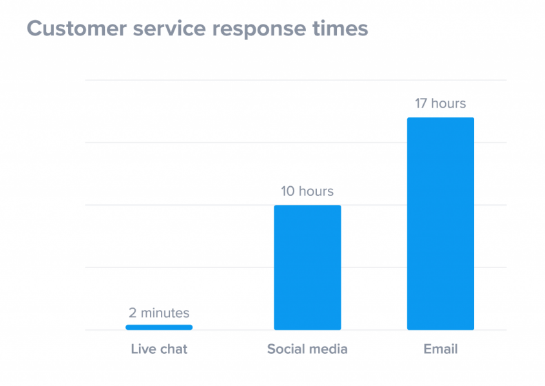
Fast as it is, traditional live chat isn’t perfect—messages can still sit in a queue, and some chats go unanswered.
Chatbots deliver an instant first reply. They can greet the visitor, understand intent, and gather context within seconds. That keeps the conversation moving.
For fastest perceived speed, lead with a bot and follow with a human when needed. Use the bot to collect details (account, order number, goal), triage by intent, and route to the best available agent.
Best practices: set expectations (“An agent will join in ~2 minutes”), surface self-serve answers while the customer waits, and keep transcripts when handing off so customers never repeat themselves.
Cost efficiency
Live chat is usually cheaper than phone support because agents can handle multiple conversations at once.
You’ll pay for software seats, any AI add-ons, and the people operating the queue (in-house or outsourced). Total cost depends on chat volume, hours of coverage, and complexity.
As a rule of thumb, expect per-agent pricing for chat software, plus separate usage or add-on fees for AI features. Bot platforms often charge by number of conversations or monthly active users.
Staffing models vary. Many small teams run with one to five dedicated agents during business hours, then switch to bot-only coverage after hours. That keeps spend in check without sacrificing responsiveness.
If you’re purely minimizing cost, automation handles routine work cheaper than humans. If you’re maximizing quality for complex cases, budget for skilled agents and use AI to accelerate—not replace—them.
Human touch
AI has come a long way. Bots can recognize intent, pull answers from your knowledge base, and keep tone friendly. Many customers won’t notice the handoff when it’s seamless.
But humans still matter—especially for high-stakes, emotional, or ambiguous situations. Empathy, negotiation, and nuanced troubleshooting are where great agents shine.
There’s also customer preference. Some people simply want a person. Others are happy with a fast, accurate bot if it gets them an answer.
Common concerns about bots include wrong answers and dead ends. Solve that with clear “Talk to a person” options, smart escalation rules, and visible agent names when a human joins.
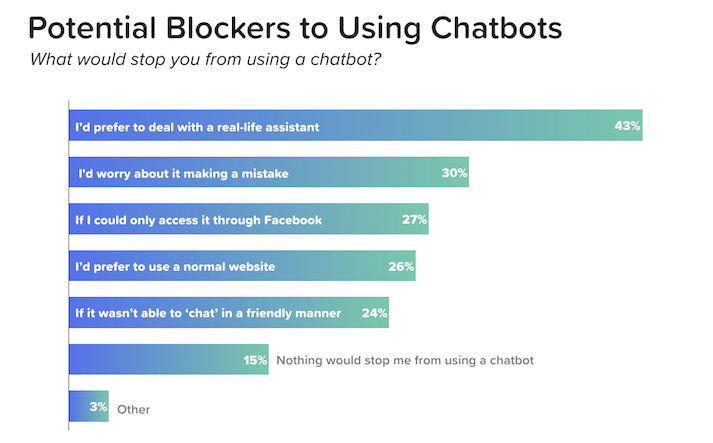
Design your flow so the bot handles quick wins (order status, basic troubleshooting, store hours) and immediately routes anything sensitive, technical, or billing-related to a specialist.
Availability
Most teams can’t staff human chat 24/7, and that’s fine. Keep live agents when volume is highest, then let a bot cover nights, weekends, and holidays.
That gives you round-the-clock responses without round-the-clock payroll. Customers get help immediately, and complex issues roll into the next agent shift with full transcripts.
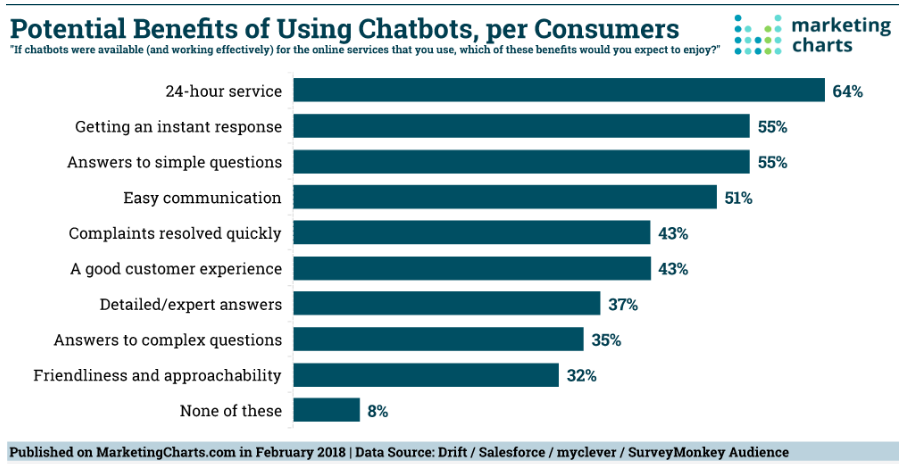
Practical tip: clearly display live hours in the widget and set after-hours expectations (“We’ll follow up by 9 a.m. local time”). That transparency alone boosts satisfaction.
Resolving inquiries
Fast replies are great, but resolution is the goal. Measure first-contact resolution (FCR), escalation rate, and time to resolution for both bots and humans.
Well-designed bots handle a large share of routine chats. When they’re unsure, they should escalate with context—no “starting over.”

Bots still miss sometimes. Spelling mistakes, vague questions, or highly specific scenarios can stump them. That’s why your design must make it easy to reach a person.
Example below: the first answer is helpful; the follow-up goes sideways. Train for follow-ups and clarifying questions so the bot recovers gracefully—or routes quickly.
Here’s an example of that in action:
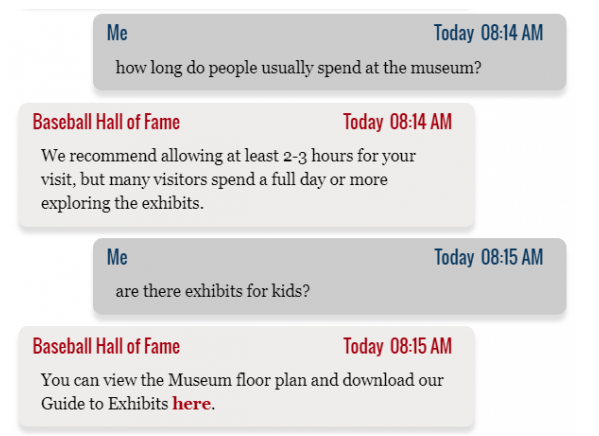
Bottom line: use bots to resolve the predictable and humans to resolve the nuanced. Connect both with good routing and shared context.
Conversions
Your goal isn’t just to answer questions—it’s to help visitors succeed, which often means buying or completing a task.
Live chat can lift conversion rates and average order value by removing friction at critical moments—sizing, compatibility, pricing clarity, or policy questions.
Bots can be proactive in ways humans can’t. Trigger helpful messages when someone lingers on a pricing page, looks stuck in checkout, or is viewing return policies after adding to cart. If the bot can’t solve it, transfer to a closer.
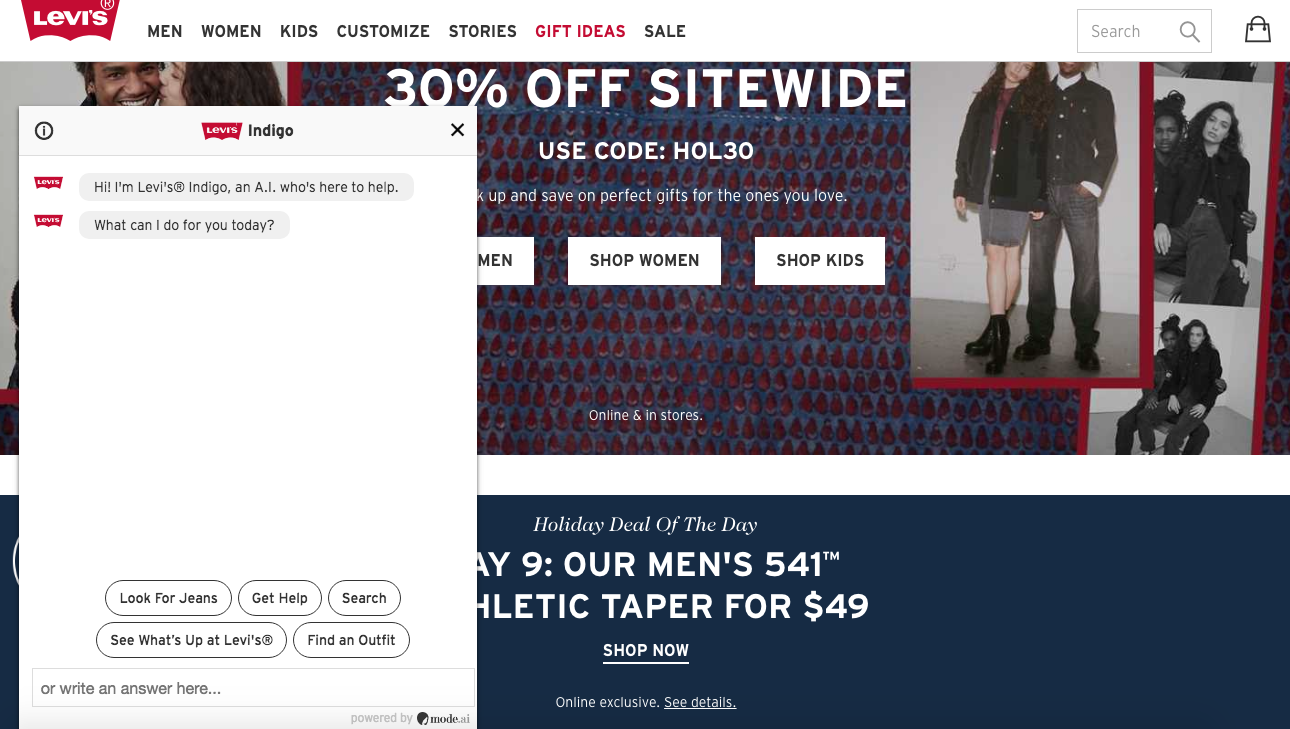
Keep the outreach helpful, not pushy. Offer guidance, comparisons, or a quick link to the right product—not generic pop-ups.
Conclusion
Your customers get better service when you offer live chat—and even better when you combine smart automation with skilled humans.
Use chatbots for instant replies, intake, and common tasks. Use human agents for empathy, complex troubleshooting, and revenue-critical conversations. Design clear handoffs, keep transcripts, and measure both speed and resolution.
Automation can lower costs and extend hours; trained agents raise quality and trust. Together, they shorten time to answer, resolve more issues on the first try, and help more visitors convert.
Implement both on your site for the best mix of availability, efficiency, and results.
